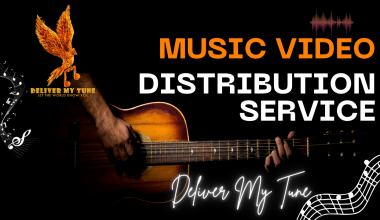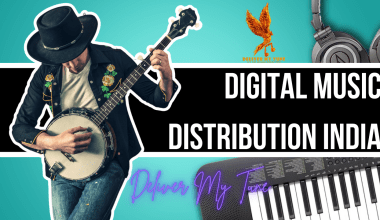The Revenue Sharing Model of Apple Music is designed to distribute earnings from subscription fees and advertising revenue among artists, songwriters, and music labels. Unlike traditional music sales, where artists earn per unit sold, streaming services like Apple Music provide continuous revenue as long as the music is streamed.
How Does Apple Music’s Revenue Sharing Model Work?
The Revenue Sharing Model of Apple Music operates on a subscription basis. Here’s a simplified breakdown of how it works:
- Subscription Fees: Users pay a monthly subscription fee to access Apple Music’s library.
- Revenue Pooling: Apple Music pools all subscription fees and ad revenue into a single revenue pool.
- Distribution: The revenue pool is then distributed to rights holders (artists, songwriters, and labels) based on the number of streams their music receives.
Detailed Distribution Process
- Calculating Stream Share: Each artist’s share of the revenue pool is determined by the percentage of total streams their music accounts for.
- Payment to Rights Holders: The calculated share is then paid to the rights holders, which includes artists, songwriters, and music labels.
For example, if an artist’s songs make up 1% of all streams on Apple Music, they receive 1% of the revenue pool.
Key Components of Apple Music’s Revenue Sharing Model
1. Per-Stream Payment
The per-stream payment is not fixed and varies depending on the total revenue pool and the total number of streams. Generally, it ranges from $0.006 to $0.008 per stream.
2. Subscription Tiers
Apple Music offers various subscription tiers, including individual, family, and student plans. Each plan contributes differently to the revenue pool:
- Individual Plan: Standard rate
- Family Plan: Higher rate due to multiple users
- Student Plan: Discounted rate
3. Ad-Supported Revenue
While Apple Music primarily operates on a subscription model, it also generates revenue from advertisements, which is added to the revenue pool.
4. Geographical Variations
The revenue per stream can vary by country, reflecting the subscription fee differences across regions.
Benefits of the Revenue Sharing Model of Apple Music
The Revenue Sharing Model of Apple Music offers several benefits:
1. Steady Revenue Stream
Unlike traditional sales, artists earn revenue as long as their music is streamed. This ensures a steady income.
2. Global Reach
Apple Music’s global platform allows artists to reach a worldwide audience, increasing their potential earnings.
3. Support for Independent Artists
Independent artists can distribute their music on Apple Music, enabling them to earn revenue without a major label’s backing.
4. Transparency
Apple Music provides detailed analytics, helping artists understand their earnings and performance.
Challenges in the Revenue Sharing Model of Apple Music
1. Low Per-Stream Revenue
While streaming provides a steady revenue stream, the per-stream revenue is relatively low, requiring high stream counts to generate significant income.
2. Market Competition
With many streaming services available, competition can affect an artist’s visibility and revenue on Apple Music.
3. Revenue Distribution
The model’s fairness can be questioned, especially for smaller artists who may not receive a substantial share of the revenue pool compared to popular artists.
Future of the Revenue Sharing Model of Apple Music
1. Evolving Payment Structures
Apple Music continues to refine its payment structures to ensure fair compensation. Future changes may include higher per-stream rates or additional revenue sources.
2. Integration with Other Services
Integrating Apple Music with other Apple services, like Fitness+ and Apple One, could increase subscription numbers, boosting the revenue pool.
3. Enhanced Analytics
Improving analytics can help artists better understand their audience and optimize their revenue streams.
4. Blockchain Technology
Blockchain technology might play a role in the future of the Revenue Sharing Model of Apple Music by ensuring transparent and instant payments to artists. This technology can help eliminate delays and discrepancies in revenue distribution.
5. Exclusive Content and Partnerships
Apple Music may continue to invest in exclusive content and partnerships with artists. These exclusive deals not only attract more subscribers but also provide higher revenue shares to the artists involved.
How Artists Can Maximize Their Earnings on Apple Music
1. Promote Their Music
Effective promotion can increase streams, directly impacting revenue. Utilizing social media, music videos, and collaborations can help in driving more traffic to an artist’s Apple Music page.
2. Engage with Fans
Building a loyal fanbase can lead to more consistent streams. Engaging with fans through live streams, social media, and fan interactions can create a dedicated listener base.
3. Optimize Release Strategies
Timing releases strategically can maximize visibility and streams. Releasing music during peak listening times and aligning with major events or holidays can boost streaming numbers.
4. Collaborate with Other Artists
Collaborations can expand an artist’s reach and audience. Partnering with other artists for features or joint projects can introduce music to new listener groups.
5. Leverage Playlists
Getting featured on popular playlists can significantly boost streams. Artists should aim to get their music on curated playlists by Apple Music and influential playlist curators.
6. Use Analytics
Apple Music provides detailed analytics that artists can use to understand their audience and optimize their marketing strategies. By analyzing which songs perform best and identifying key demographics, artists can tailor their efforts to maximize streams and revenue.
Comparison with Other Streaming Services
1. Spotify
Spotify also operates on a similar revenue-sharing model, but with some differences. The per-stream payout on Spotify is generally lower than Apple Music, and Spotify offers both free (ad-supported) and premium subscription tiers.
2. Tidal
Tidal is known for its higher per-stream payouts compared to Apple Music and Spotify. Tidal’s focus on high-fidelity audio and artist-owned equity positions it differently in the market.
3. YouTube Music
YouTube Music combines video and audio streaming, offering unique opportunities for artists. However, the per-stream revenue is typically lower than audio-only platforms due to the ad-supported model.
Revenue Sharing Model of Apple Music: A Global Perspective
1. United States
In the US, Apple Music is one of the leading streaming platforms, and its revenue-sharing model significantly impacts the earnings of American artists.
2. Europe
European artists also benefit from the Revenue Sharing Model of Apple Music, with the platform’s strong presence in countries like the UK, Germany, and France.
3. Asia
In Asia, Apple Music is growing in popularity, and the revenue-sharing model helps artists from countries like Japan, South Korea, and India reach global audiences.
4. Africa
Apple Music’s expansion into African markets provides new opportunities for artists on the continent. The revenue-sharing model enables African artists to earn from streams globally.
Criticisms and Controversies
1. Fairness of Revenue Distribution
One of the primary criticisms of the Revenue Sharing Model of Apple Music is the perceived unfairness in revenue distribution. Major artists with millions of streams often receive the bulk of the revenue, while smaller, independent artists struggle to earn significant income.
2. Transparency Issues
While Apple Music provides detailed analytics, some artists and labels have raised concerns about the transparency of the revenue-sharing process. Calls for more detailed breakdowns and faster payment cycles are common.
3. Impact on Physical Sales
The rise of streaming services like Apple Music has impacted physical sales and digital downloads. Some argue that while streaming provides a steady income, it has devalued music as a commodity compared to traditional sales.
The Role of Music Labels
1. Major Labels
Major labels play a significant role in the Revenue Sharing Model of Apple Music. They often negotiate higher royalty rates and better placements for their artists on the platform.
2. Independent Labels
Independent labels benefit from the model by having their artists’ music distributed globally without the need for extensive physical distribution networks. However, they face challenges in securing the same level of revenue as major labels.
3. Self-Releasing Artists
Self-releasing artists, often referred to as independent or indie artists, have seen a significant shift in their ability to monetize their music thanks to the Revenue Sharing Model of Apple Music. These artists can distribute their music globally without the backing of a major label, allowing for more creative control and potentially higher personal revenue shares. However, they also face the challenge of self-promotion and competing with major label artists for visibility and streams.
Strategies for Optimizing Earnings on Apple Music
1. Regular Releases
Consistently releasing new music can help maintain and grow an artist’s listener base. Regular releases keep fans engaged and increase the chances of being included in playlists and recommendations.
2. Engaging Content
Creating engaging content such as music videos, behind-the-scenes footage, and interactive social media posts can drive traffic to an artist’s Apple Music page. Engaging content helps in building a deeper connection with fans, encouraging more streams.
3. Exclusive Releases
Offering exclusive content or early access to new releases on Apple Music can attract more listeners. Exclusive deals can also result in promotional support from Apple Music, further increasing visibility.
4. Collaborations and Features
Collaborating with other artists can introduce music to new audiences. Featuring on tracks with other popular artists can boost an artist’s profile and lead to more streams and revenue.
5. Merchandising and Bundling
Artists can use Apple Music as a platform to promote merchandise and bundle music with other products. This not only increases revenue but also enhances fan engagement and loyalty.
The Impact of the Revenue Sharing Model of Apple Music on Different Genres
1. Pop and Mainstream Music
Pop and mainstream artists generally benefit the most from the Revenue Sharing Model of Apple Music due to their high stream counts. These genres often dominate playlists and receive significant promotional support from the platform.
2. Niche and Independent Genres
While niche and independent genres may not receive the same level of streams as mainstream music, they benefit from having a dedicated listener base. The Revenue Sharing Model of Apple Music allows these artists to earn consistently from their loyal fans.
3. Classical and Jazz Music
Classical and jazz music often see fewer streams compared to contemporary genres. However, the high quality of dedicated listener engagement can still result in substantial earnings over time.
4. Regional and World Music
Apple Music’s global reach provides an excellent platform for regional and world music artists to distribute their music internationally. This exposure can lead to increased streams and revenue from diverse audiences.
Apple Music’s Role in the Broader Music Ecosystem
1. Competition with Other Streaming Services
Apple Music competes with other major streaming platforms like Spotify, Tidal, and YouTube Music. Its unique features, exclusive content, and integration with Apple’s ecosystem give it a competitive edge.
2. Support for Emerging Artists
Apple Music’s curated playlists and editorial support provide a significant platform for emerging artists. Features like Apple Music Up Next spotlight new talent, helping them gain visibility and streams.
3. Innovation in Music Distribution
Apple Music continues to innovate with features like spatial audio, lossless streaming, and integration with other Apple services. These innovations enhance the user experience and provide more value to subscribers, potentially increasing the revenue pool for artists.
Enhancing Fan Engagement on Apple Music
1. Live Performances and Exclusive Content
Offering live performances, exclusive tracks, and interviews on Apple Music can enhance fan engagement. These unique experiences can drive more streams and create a deeper connection between artists and their audience.
2. Personalized Playlists
Artists can create personalized playlists for their fans, featuring their own music along with tracks that have influenced them. This can increase streams and provide fans with a more intimate look at the artist’s musical journey.
3. Fan Interactions
Engaging with fans through social media and incorporating their feedback into music releases can create a loyal listener base. Interactive sessions, Q&A, and fan requests can make fans feel valued and more likely to stream music on Apple Music.
The Future of the Revenue Sharing Model of Apple Music
1. Technological Advancements
Technological advancements such as artificial intelligence and machine learning can improve music recommendations, helping artists reach new audiences. These technologies can enhance the overall streaming experience, potentially leading to increased streams and revenue.
2. Expanding Markets
As Apple Music continues to expand into new markets, artists can tap into previously untapped audiences. Emerging markets offer vast potential for increased streams and revenue.
3. Sustainable Practices
Apple Music is likely to invest in sustainable practices, both in terms of environmental impact and fair compensation for artists. Ensuring fair pay and reducing carbon footprints can enhance the platform’s reputation and attract more subscribers.
4. Community Building
Building a strong community around Apple Music can enhance loyalty and engagement. Features that promote social interaction among users and between artists and fans can lead to a more vibrant and supportive ecosystem.
Conclusion
The Revenue Sharing Model of Apple Music has transformed the way artists and music labels monetize their work. By providing a steady revenue stream, global reach, and support for independent artists, Apple Music has become a crucial platform in the digital music landscape. While challenges like low per-stream revenue and market competition remain, the benefits and opportunities offered by Apple Music are significant.
Artists can maximize their earnings by promoting their music, engaging with fans, optimizing release strategies, and leveraging analytics. The future of the Revenue Sharing Model of Apple Music looks promising, with potential advancements in technology, expanding markets, and sustainable practices.
In conclusion, understanding and effectively utilizing the Revenue Sharing Model of Apple Music can help artists thrive in the ever-evolving music industry. By embracing this model, artists can ensure fair compensation, reach wider audiences, and achieve lasting success in their musical careers.
For further reading, explore these related articles:
For additional resources on music marketing and distribution, visit Deliver My Tune.






